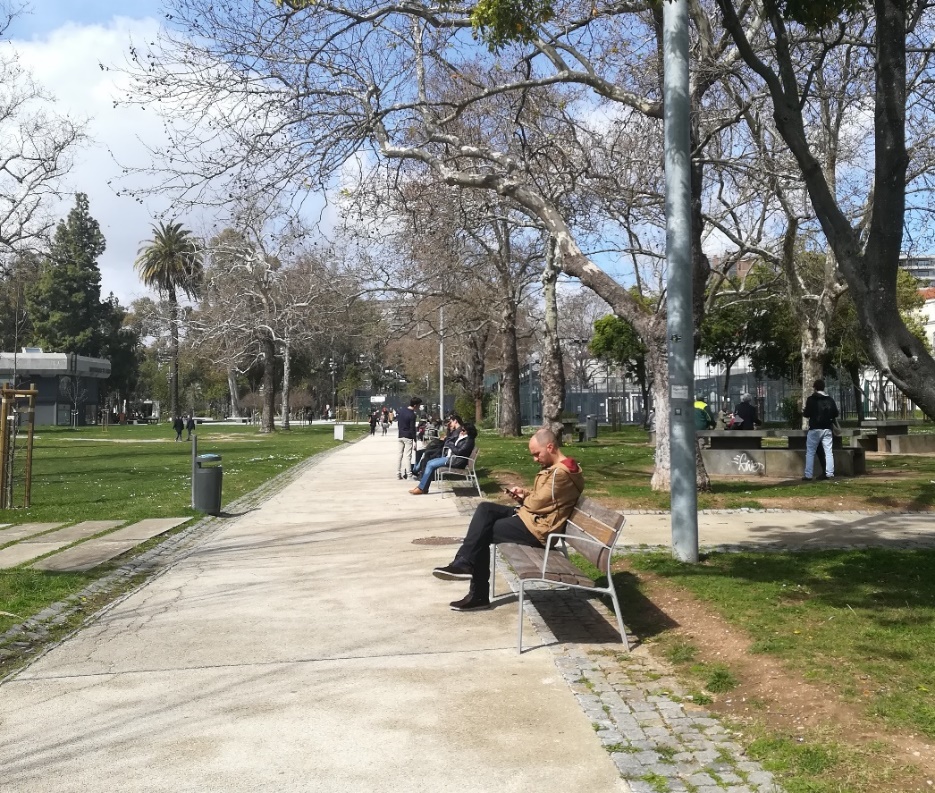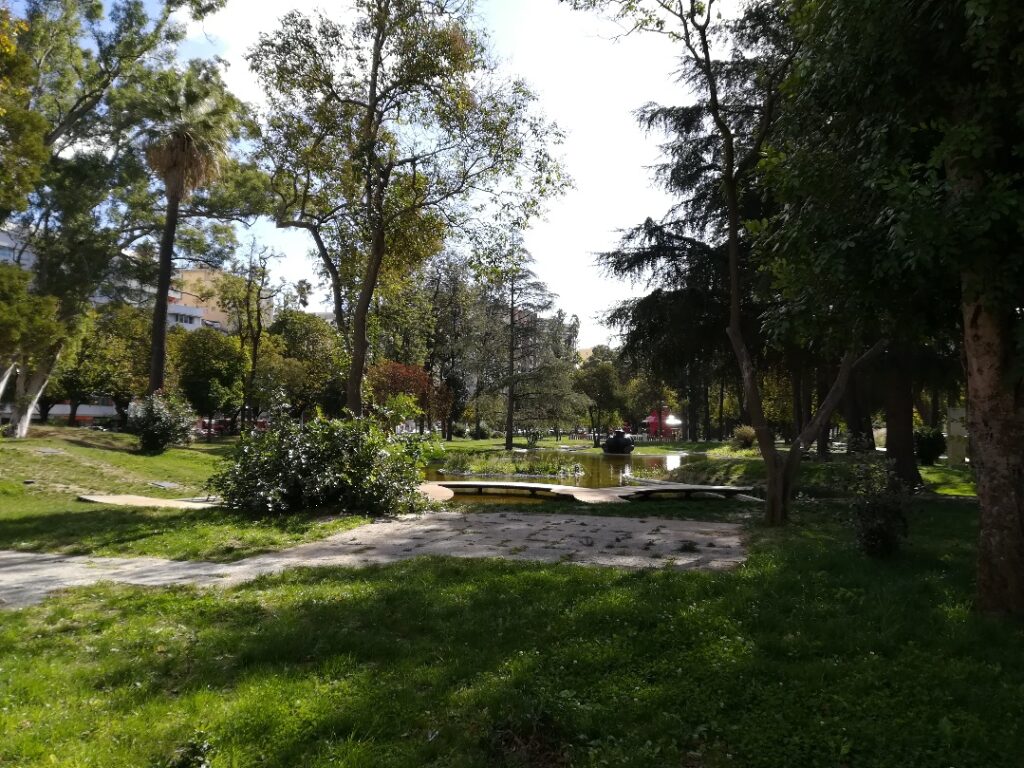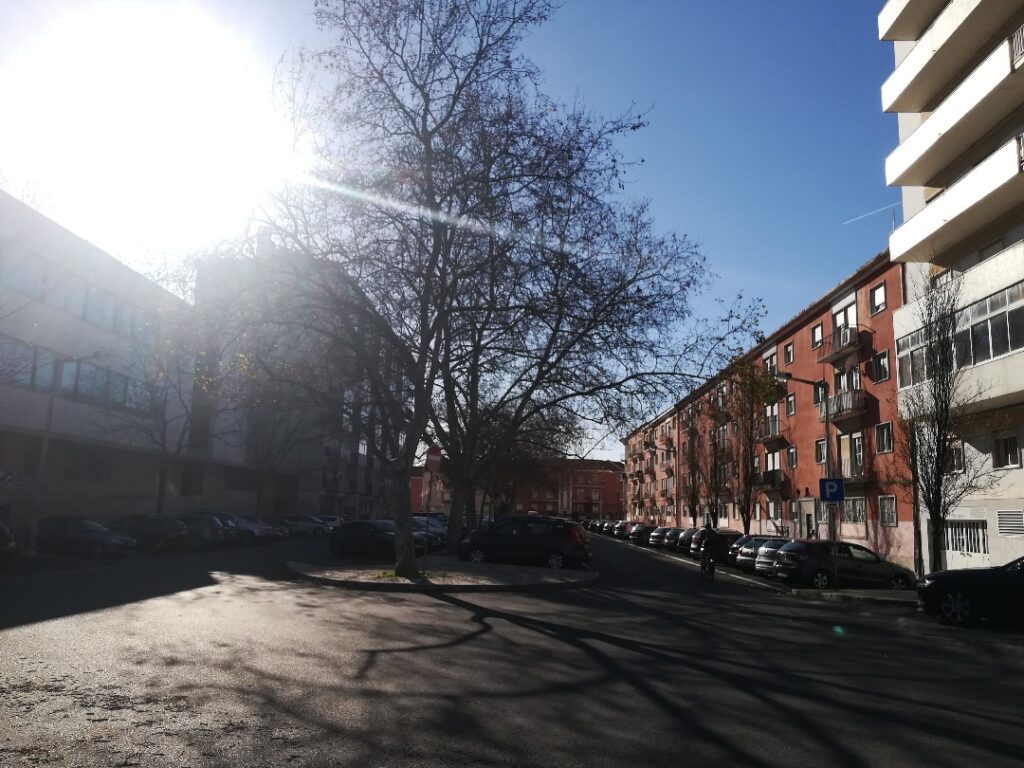Authors: Joana Batista, Inês Almeida, Carlos Smaniotto Costa, Marluci Menezes
Public space is here conceptualised following UN-Habitat (2015, 15) as “all places publicly owned or of public use, accessible and enjoyable by all for free and without profit motive”. Among them are streets, squares, plazas, marketplaces, parks, green spaces, greenways, community gardens, playgrounds, waterfronts, urban forests and agricultural used land. C3Places research focus only on urban public open spaces.
Public spaces have been idealised as democratic domains, places of inclusiveness where is possible to be among friends and strangers, encounter differences and engage in planned or serendipitous interactions (Innerarity, 2006). Central to a city well-being, public spaces contribute to the quality of urban life, fostering social, cultural and economic capital (UN-Habitat, 2016). A vast body of literature focus on their social function (Figure 1), as providers of the place for peoples’ interaction with other people (Carmona, Heath, Tiesdell, & Oc, 2003; Gehl, 1987; Innerarity, 2006; Jacobs, 1961; Lefebvre, 1991; Sennett, 1977) and with their environment (Smaniotto & Menezes, 2016). Public spaces act as stage for the enactment of citizenship, to practice publicness, and as such they play a key role within the complex social infrastructure (Smaniotto Costa & Menezes, 2016). Societies’ differences and similarities are put on display in public spaces, allowing distinct groups to claim their right to appropriate particular places and manifest their sense of belonging to society (Innerarity, 2006; Mitchell, 1995). Public spaces enable symbolic identification (Carmona et al., 2003), they are the places where social and cultural identities and the individuals’ role in their community are negotiated, and this may foster the context for mutual understanding and respect, enabling the development of social bonds. Yet, historically, public space was also the site where power structures manifested themselves and dominant social and moral orders were produced, imposed and perpetuated (Sennett, 1977).

Moreover, those public spaces covered by plants and with soft surfaces (Figure 2) offer further environmental benefits as they improve the urban environmental quality (such as air purification, water storage, CO2 sequestration) and provide space for leisure and recreational activities (Smaniotto Costa, Suklje Erjavec, & Mathey, 2008).

They offer also further benefits for public mental health (Muñoz, 2009) and for decreasing in contemporary health problems as obesity and sedentarism (Godbey, 2009). Jacobs (1961) and Gehl (1987) drew attention to the importance of putting people at the centre of public space, analysing how people appropriate specific places, what are their spatial practises and needs towards creating better and more inviting public spaces.
C3Places following those premisses is analysing how specific users – teenagers or elderly – appropriate urban public open spaces and how they can be better configurated to respond to different needs. In Lisbon, observations seem to indicate that urban public spaces of transit, as streets (Figure 3), are used mainly for matters of convenience and proximity to primary spaces of daily significance as the home and the school (TBA).

References
- Carmona, M., Heath, T., Tiesdell, S., & Oc, T. (2003). Public Places, Urban Spaces: The Dimensions of Urban Design. Michigan: Architectural Press.
- Gehl, J. (1987). Life Between Buildings: Using Public Space. New York: Van Nostrand Reinhold.
- Godbey, G. (2009). Outdoor Recreation, Health, and Wellness: Understanding and Enhancing the Relationship. Recreation, May 2009, 1–42.
- Innerarity, D. (2006). O novo espaço público. Lisboa: Teorema.
- Jacobs, J. (1961). The Death and life of Great American Cities. New York and Toronto: Vintage Books – Random House.
- Lefebvre, H. (1991). The Production of Space. Production.
- Mitchell, D. (1995). The End of Public Space? People’s Park, Definitions of the Public, and Democracy. Annals of the Association of American Geographers.
- Muñoz, S.-A. (2009). Children in the Outdoors: A literature Review. Forres: Sustainable Development Research Centre.
- Sennett, R. (1977). The Fall of Public Man. London: Penguin Books.
- Smaniotto Costa, C., Menezes, M. (2016). A agregação das tecnologias de informação e comunicação ao espaço público urbano. Reflexões em torno do projeto CyberParks – COST TU 1306. urbe. Revista Brasileira de Gestão Urbana (Brazilian Journal of Urban Management), 8 (3): 332-344. Doi: 10.1590/2175-3369.008.003.AO04.
- Smaniotto Costa, C., Šuklje Erjavec, I., Kenna, T., de Lange, M., Ioannidis, K., Maksymiuk, G., de Waal, M. (Eds.) (2019): CyberParks – The Interface Between People, Places and Technology – New Approaches and Perspectives. Cham: Springer, Series: Information Systems and Applications LNCS 11380. DOI: 10.1007/978-3-030-13417-4.
- Smaniotto Costa, C., Suklje Erjavec, I., & Mathey, J. (2008). Green Spaces – a Key Resources for Urban Sustainability. The GreenKeys Approach for Developing Green Spaces. Urbani Izziv, 19(2 Mestne zelene površine / Urban green spaces), 199–211.
- UN-Habitat. (2015). Adequate Open Public Space in Cities. A Human Settlements Indicator for Monitoring the Post-2015 Sustainable Development Agenda.
- UN-Habitat. (2016). New Urban Agenda: Quito Declaration on Sustainable Cities and Human Settlements for All. In Habitat III Conference (p. 24). United Nations Human Settlements Programme (UN-Habitat).
